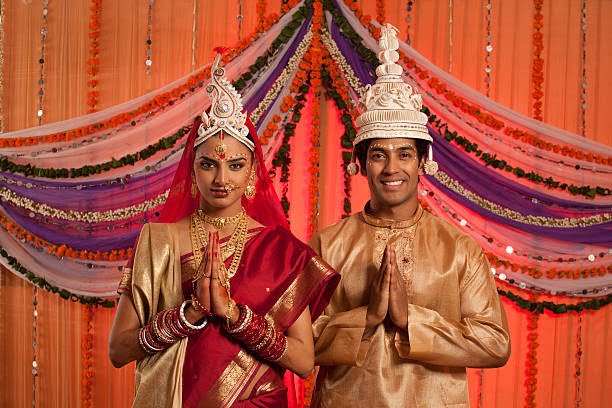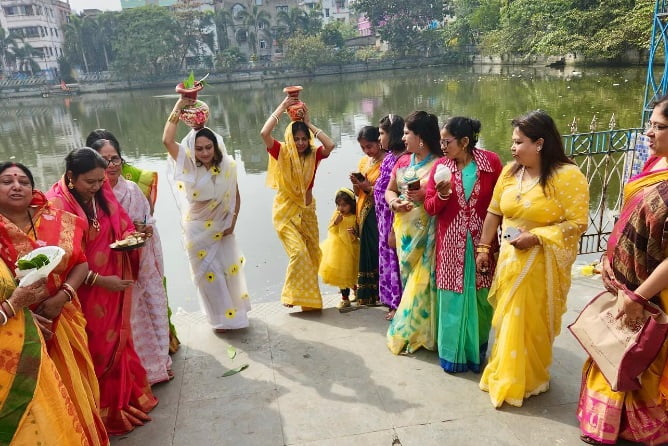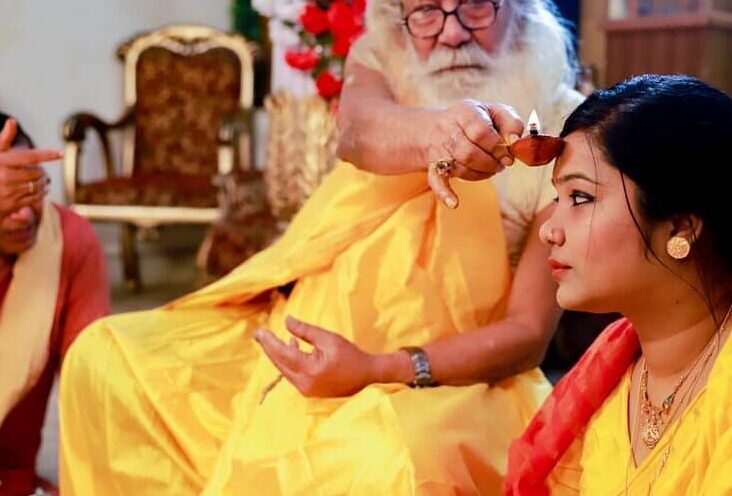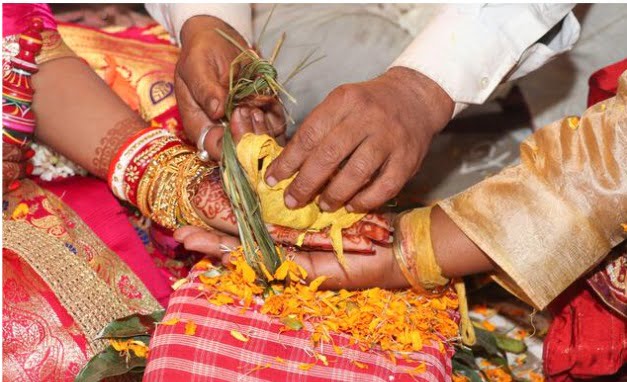Indian weddings are grand, and the three or more days-long weddings have several meaningful rituals. However, as a diverse country that embraces multiculturalism, the customs and ceremonies change from state to state. A Bengali wedding is not an exception, where colors, joy, and sweetness overflow.

Some unique Bengali wedding rituals are imbibed with such intense meanings that they will add to the joy of celebrating this grand occasion. This article talks about the true meaning behind such Bengali Wedding rituals.
Pre-wedding Rituals
Before the wedding, there are a few rituals that every Bengali follows before the wedding. Do you want to have a look at it? Here they are for you:
Ashirbad
It is the blessing ceremony performed as a part of pre-wedding rituals where the family members of the bride and groom bless them for their prosperous new journey of togetherness.

Aiburo-Bhaat
The bride and groom’s family and friends organize the aiburo-bhaat or a grand meal, including their favorite dishes. Aiburo means unmarried. So, this ceremony marks the bride and groom’s transition from singlehood to married life. You can call it a ritualistic bachelorette with family and not just friends.

Ganga Nimontron
The Bengalis worship the auspicious Ganga river and walk towards the river with betel leaf, nuts, earthen lamps (diya), haldi, etc, to invite River Ganga to the wedding ceremony while seeking divine blessing for the couple.

Wedding Day Rituals
Now, the wedding day is here. So, are you ready to have a look at the rituals Bengalis follow on this day:
Nandi Mukh
The oldest member of the bride and groom’s family performs this ceremony. The priest chants Vedic mantras while the bride and the groom pay homage and seek their ancestor’s blessings.

Gaye Holud
A wedding, as a new journey, needs purification and beautification. Thus, Bengalis have this ritual called ‘Gaye Holud.’ Turmeric or ‘holud’ is smeared on the groom’s body and then taken from his skin to the bride’s house with other gifts. The turmeric paste is now applied to the bride.

Tatta
Tatta refers to the gifts the groom and bride’s family exchange, including clothes, accessories, cosmetics, sweets, fruits, and other treats. Sending Tatta is a way to show mutual respect to strengthen the bond between the two families.

Bor boron
The bride’s mother welcomes the groom to their house by offering sweets and doing aarti, and this ritual is known as Bor Boron. It also reflects the groom’s acceptance as a new family member in the bride’s family.
Subho Dristhi
During Subho Dristhi, the bride and groom exchange glances for the first time during the wedding. Subho Dristhi marks the initiation of their new life together.

Mala Bodol
During Mala Bodol, the bride and groom exchange their garlands, accepting each other while entering a new life together.

Sampradan
While many people frown upon this ritual, during this ceremony, the father or any elderly family member of the bride hands over the bride to the groom, thus, entrusting the bride’s responsibilities to the groom for the rest of her life.

Saptapadi
Saptapadi comes from two words, Sapta meaning seven, and Padi meaning steps. Thus, Saptapadi means seven steps. During this ritual, the bride’s anchal (pallu) is tied with the groom’s Uttariya as they take seven rounds around the wedding pyre. Each round taken during this ritual represents their wedding vows.
Sindoor Daan
The most crucial part of the Bengali wedding rituals is sindoor daan. The priest asks the groom to apply sindoor to the bride’s forehead while looking at the reflection. This ritual marks the bride as a married woman.

Post-Wedding Rituals
“Sesh Nahi Je Sesh Kotha Key Bolbe.” It is a line from a well-known Rabindrasangeet, which means you cannot have the last words until there is a finality. This finality in the Bengali wedding comes with the post-wedding rituals. Now, let’s have a look at those:
Biday
It is an emotional moment for the bride as she leaves her parental home and journeys toward her in-law’s house.

Bodhu-Boron
Bodhu-boron is a happy ritual for the groom’s family as the groom’s mother welcomes the new family member with blessings, following several small rituals, intending to show abundance in the house.
Bou-Bhat
Bou-Bhat refers to the reception party held by the groom’s family to introduce the new bride to the friends and family of the groom. The bride serves the food to the guests, showing her inclusion and acceptance in the groom’s family.

Conclusion
In Bengali tradition, welcoming a bride in the family is seen as welcoming Goddess Laxmi, which means bringing prosperity at home. Hence, the Bengali wedding ceremony never misses a single moment of grandeur. The beautiful rituals tie two people together forever and bring their families closer, doubling the joy and blessing of the celebration.



